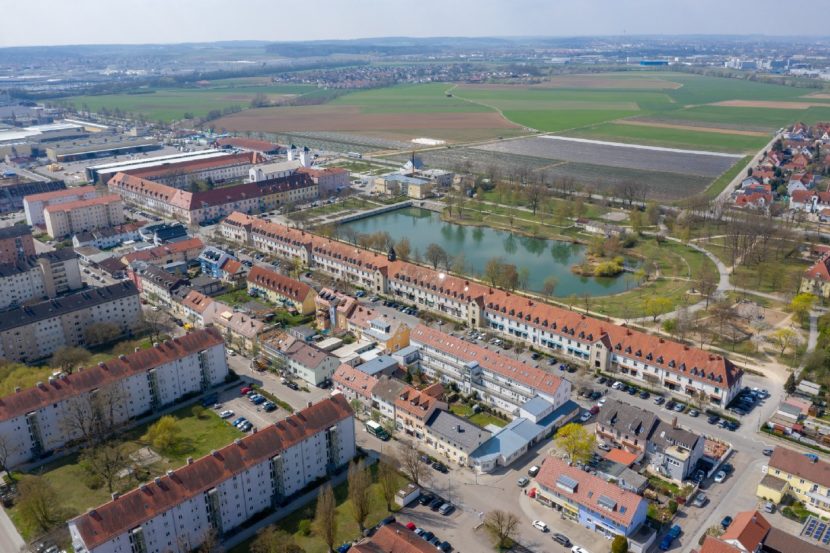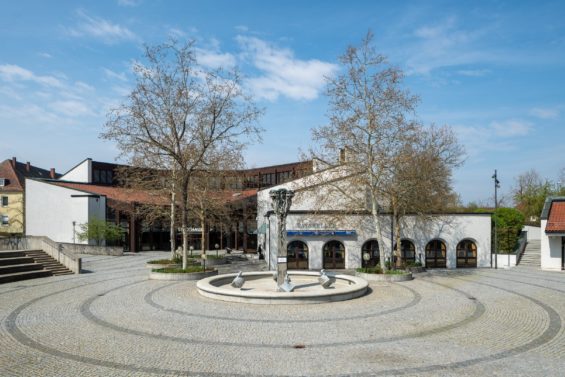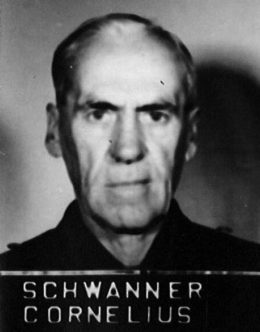Obertraubling Subcamp
February 20, 1945 – April 16, 1945
![]()
Aerial view of Neutraubling, former air base Obertraubling, 2019 (Flossenbürg Concentration Camp Memorial / Photo: Rainer Viertlböck)
![]()
Former SS-Casino in Obertraubling, today city hall in Neutraubling, 2019 (Flossenbürg Concentration Camp Memorial / Photo: Rainer Viertlböck)
![]()
Detail leader Cornelius Schwanner, ca. 1946 (National Archives, Washington D.C.)
-
Prisoners
600 prisoners, of whom more than half were Jewish. Most of them arrived at Flossenbürg from recently disbanded concentration camps. Over 200 Polish, 100 Czech, 47 Croatian and 35 French men, along with men from nine other countries, were transported to Obertraubling.
-
Forced labor and quarters
The prisoners were forced to clear the debris off the destroyed airbase, bombed by the U.S. Air Force in mid-February, and level a runway for the ME 262.
-
According to all sources, hardly any work was done because the prisoners were too ill and weak. Their condition was worsened by their quarters in the base’s mess hall. The two-floor shell of a building had neither a solid roof nor floors, windows or doors. In addition, profiteering rackets by the kitchen Kapo deprived the prisoners of their food rations, which in any case was meagre.
-
Guards
Detail leader Cornelius Schwanner and 61 SS guards.
-
Death toll
170 men died of dysentery and other illnesses.
-
Disbanding of the camp / end of the war
The subcamp was disbanded on April 16. The sick prisoners were transported by trucks to Dachau. The remaining prisoners were forced to march by foot to Dachau and arrived there on April 24, 1945.
-
Commemoration
The first concentration camp cemetery was closed in 1957, with the five meter high cross relocated to the local cemetery. Since October 2006, there is a memorial stone in the location of the first concentration camp cemetery.


